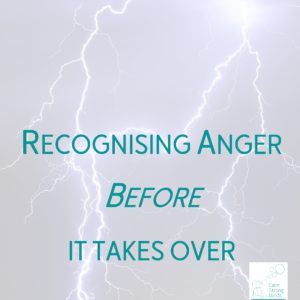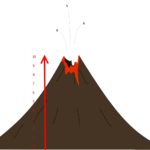Identifying and Managing Feelings of Anger
Sudden anger outbursts can happen for so many reasons, but when it appears like someone has flicked a switch on your child it can be difficult to understand and manage. I speak to many parents who describe their child becoming angry, shouting, and completely unable to calm down with no identifiable trigger. Often they share their feelings of frustration and confusion as they struggle to understand why this sudden change is happening and uncertainty of how to respond to it.

Mindfulness teaches us the importance of identifying and turning towards difficult feelings and emotions rather than try to block them or deny their presence. There is nothing wrong with feeling angry indeed anger can be very helpful to us when it is kept in control and channelled positively. However, unless we are aware of the angry feeling, it can easily take over and make us behave in a way that is not acceptable. This difference of thinking about the behaviour being unacceptable, not the emotion, is a hugely important distinction to make and it can help us, as parents, respond in a more helpful way in that moment.
It can feel very challenging to turn towards angry feelings, children often feel uncomfortable talking about it because they are embarrassed by the action or choices that they made when anger was in control. This is why it’s so important to begin any conversation about this topic when everyone is calm, when there is lots of time and space in the day, and being very clear that this is not a ‘telling off’ conversation but a chance to work together against anger.
Anger in the Body
The first step is to start to recognise the effect that anger has on the body as it can be a helpful warning sign that anger is around. The body releases a number of different chemicals when anger is experienced which have a natural and normal physiological response in the body. Support your child to think about what anger does to their body, common responses in the body include:
- Tensing of muscles
- Clenching of fists
- Feeling shakey
- Sweating
- Heart racing
- Breathing harder
- Restlessness
One way to help children to identify their responses to anger is to get them to think about a time when they were angry and them ask them “How is your body feeling?” then perhaps guide them in a body scan asking them to notice how the different parts of their body are feeling. Remember that their descriptions and words are important as this is what makes sense to them so if they describe getting ‘prickly feelings all over my body’ or having ‘fists like rock’ then go with these descriptors.
You can get creative with this too, using an outline of a body (possibly even theirs) you can draw and mark on where they feel and notice anger in their bodies. If you’re looking for inspiration, I really like this diagram from blissful kids.
Spotting Anger Growing
Once you know the effect of anger on the body, you can start to use that to your advantage in the quest to stay ahead of anger – staying in control of it rather than it being in control of you. I like using the image of a volcano and the idea that often anger bubbles under the surface like magma in a volcano but we don’t see it until the volcano suddenly erupts. By being able to recognise the presence of anger before the ‘explosion’ or ‘outburst’ it becomes easier to use strategies to calm, stay in control of the anger and make wise choices about behaviour.

Using this image, try to plot on the different warning signs of anger as it gets stronger and gets closer and closer to erupting.
Perhaps at 1, you might notice getting warmer or the jaw getting tense
At 5, you might notice muscles tightening and the heart beating a little faster
At 9, you might notice that you can’t sit still and your fists are clenched
Try to plot on as much information as possible including physical sensations, thoughts that might appear at different points, and behaviours that might happen at different stages.
Download a blank copy of The Anger Volcano to fill in.
Calming Anger Down
Once you can recognise anger at it’s different stages, you can start to think together about strategies that could be used to help calm the volcano and keep it further away from erupting. Start by brainstorming different ‘calm down’ ideas and just get everything on a piece of paper. You might be surprised at the strategies that your child already uses! If they can’t think of anything why not ask them about a time when you know they got angry but the volcano didn’t explode – often there are examples at school when something happened but they did not respond in the same way as they would at home. Invite them to think about this time and recall what they did to help. This is a lovely exercise to do as it is so positive to help children to recognise the tools and skills that they already have to calm the anger volcano down. Not only does this help them to think about other times that they can use their tools and skills, but it also helps them to realise that they have the answers inside them already!
Once you have all the ideas down, start to think about the times when they could use them. For example, going and doing something else, like listening to music, might help best when the volcano is around 3 or 4 and taking a minutes mindful breathing might help the most when the volcano is at 7 or 8. Start to add these ideas to the right place on the volcano.
Finally put the volcano somewhere where everyone can see so that it can be used as part of the fight back against anger. It helps to be able to refer to the volcano, for example if you see your child beginning to get angry you could say ‘I wonder where the anger volcano is right now’, then you can look together, plot where the angry feelings are and see what strategies could be done to help calm things down. Talking about it in this way is very non-blaming for the child as you are taking the experience of anger away from it being ‘theirs’ or ‘their fault’ and then helping them to think about what to do to regain control.
Guided Meditation for Anger
If your child regularly experiences anger, then you might want to introduce them to a regular mindfulness practice to help them learn breathing and relaxation skills that they can use to help calm the anger down.
Here is a guided meditation specifically about feelings of anger:
Find a comfy position to sit or lie in. Take 3 deep breaths and on the last breath gently close your eyes. Now, breathe normally as you listen to the story.
You’re walking through a field on a warm, sunny day. Listening carefully, you can hear the birds in the trees and you even spot some squirrels running through the grass. As you look around, you notice that a magical creature has appeared next to you with a special glass jar. The magical creature is very friendly and happy and says to you in a kind voice, “I want you to collect all your angry thoughts and feelings from your body and put them in my special jar”.
So, starting at the top of your head you gather all the angry thoughts that are inside, wrap them up and put them in the jar. You watch them whizzing around as they make different colours in the jar, but they stay in the jar and don’t come out.
Working your way down your body, you collect all the angry feeling from inside. From your face, your jaw, your mouth… From your shoulders, arms and hands, your chest, back and tummy… From your legs, feet and toes… When you get to the end of your toes you gather up all of those different feelings and put them in the jar with the thoughts.
You watch as the magical creature puts the lid on the jar and see that the angry thoughts and feelings start to create some amazing colours and shapes in the jar. You spend some time watching the patterns and colours as they change and play together. Indeed, you start to feel quite amazed at how beautiful the thoughts and feelings have become.
Then the magical creature says to you kindly “say goodbye to these angry thoughts and feelings. I’m going to look after them for you now”. With that the creature turns around and walks away carrying the jar under its arm. You watch the creature as it disappears out of sight.
Then you notice that your body feels lighter, more relaxed and calm. Your thoughts are settled and clear. You can focus on just breathing in and breathing out, in and out, and you know that whenever you need, your magical creature will come with its special jar and gather all the angry thoughts and feelings so that you can find this calm and happy feeling inside you again.
Download a pdf of this Guided Meditation for Angry Thoughts and Feelings
It can be hard to talk about feeling of anger, particularly as the effects of anger can be very hard to manage. I hope this blog has given some ideas that you can use to help make home just a little bit less explosive. Do get in touch if you have any questions.